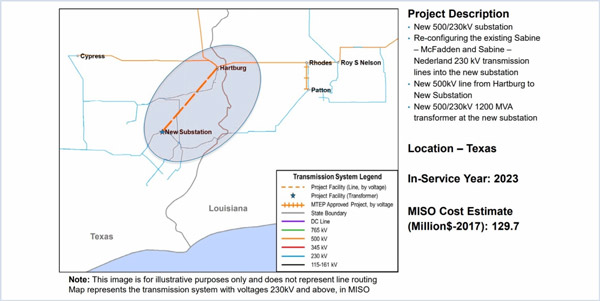By Amanda Durish Cook
MISO’s Board of Directors met via conference call Friday to grant belated approval of the RTO’s second competitive transmission project, the only one in the 2017 Transmission Expansion Plan.
The board voted unanimously during a five-minute conference call to approve the 500-kV Hartburg-Sabine project, MISO’s second-ever competitively bid transmission project and the first such project to include a substation. The $130 million line is intended to alleviate constraints in MISO South’s West of the Atchafalaya Basin load pocket area bridging Texas and Louisiana. MISO has added two new staff members to oversee the competitive process behind the project and will send a request for proposals on Tuesday, leaving the bidding window open until late July. MISO plans to announce a developer no later than Jan. 2, 2019.
Board Chairman Michael Curran said the line is on track to be “a very worthy project.”
Vice President of System Planning Jennifer Curran said the project will provide better than a 1.25 benefit ratio “in a highly congested area.”
Although it’s technically part of MTEP 17, approval of the project was delayed because of stakeholders’ concerns over the cost estimate and a late Tariff change to separate Texas and Louisiana into their own zones for cost allocation.
In November, regulators from both states asked MISO to create the separate zones for the two states to allow for a more specific cost allocation of market efficiency projects. All of the 353 other MTEP 17 projects were approved by the board in early December. (See MISO Board Approves $2.6B Transmission Spending Package.)
FERC approved MISO’s Tariff change to separate the zones last week. In a Jan. 29 order (ER18-364), the commission said the creation of zones based on state boundaries is just and reasonable, overriding East Texas Electric Cooperative’s arguments that MISO didn’t give enough notice to stakeholders to comment on the filing and that its cost estimates were inadequate.
The commission said the state-divided zones result in “an allocation of costs that is at least roughly commensurate with the benefits of market efficiency projects” and make “the adjusted production cost savings analysis more granular and arguably increases the precision with which beneficiaries are identified and costs are thus allocated.”




